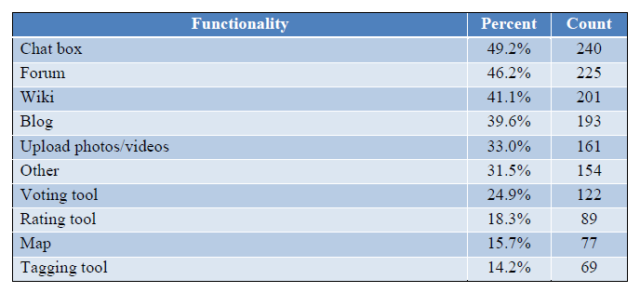Social Computing to Support Knowledge Management

Knowledge Management is one of important part in the organization which can determine the development of internal organization. Knowledge management can help organization to collect, save, disseminate, and reuse company asset’s knowledge. In education industry, knowledge management is very important for the lecturer and also the students to share the knowledge. During the development of Social Media era, knowledge management can be collaborate with social computing that become Social Knowledge Management.
The problem is, how to make sure the KM participants will share knowledge to other people? We have to create social knowledge management by using web 2.0 technology as the foundation for the success of knowledge management. Web 2 .0 is the technology that already familiar for the internet user that we can collaborate with another internet user. By using web 2.0, we can share content to another user and also edit content from another user (Hussein, 2013). One of the example of the use of web 2.0 is the use of e-commerce when we combine with social media, which called social commerce. Social commerce can be one of the promotion way for business.
This is also can be applied for education industry when web 2.0 can be used for teaching and learning process. Several examples of web 2.0 application that can help teaching and learning process are blog, wiki, social tagging, social gaming, etc. These are several functions of social computing that majority used by the people based on research from (Hussein, 2013) :
Table 1. the function of social computing that majority used by the people
Source : (Hussein, 2013)
Based on the information from above table, social computing also can be applied in university to share information to the lecturer about lecturer’s Catur Darma (Lecturing, Research, community services, and Personal Development). This is because based on research in one of private university in Jakarta, the lecturer is facing difficulties when the lecturer wants to access information about the research, previous training, and so on. Also new lecturer difficult to get information about current issue in teaching and learning process.
Currently, lecturers have whatsApp group or Line group to share information and have interactive discussion with another lecturers in one study program. And also for interaction with their students. But, if they use WA or Line, they can’t classified several sub topics into main topic, and there will be same questions asked by lecturer repeatedly.
If we have social knowledge management, for the example there is one knowledge management portal like social media (ex face book or we can create by our own the similar social portal), the lecturer can share his/her experience during the ‘catur darma’ in post, and the other lecturers can comment or likes. Also we can display up to date information from lecturer services center, training division, community development division, and also research division. So, Social computing in knowledge management is very important to give better understanding and give up to date information for the lecturers. Also there will be interactive discussion among the lecturers, which can be classified in several main topics.
References :
Hussein, K. A. (2013). A Framework for implementing Social Computing in Higher Education in the Gulf States. UK: School of the Built Environment, University of Salford, Manchester, UK.


